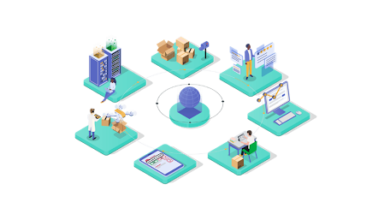Eco-Friendly Cutlery in Numbers
Eco-Friendly Cutlery in Numbers: Can Spoons and Forks Save the Planet?
“Why are we still using plastic forks if eco-friendly ones exist?”
That simple question from a student at a university cafeteria sparked a broader discussion. Small items like spoons and forks may seem insignificant, but they represent billions of discarded plastics each year. The rise of eco-friendly alternatives has created not just a new market—but a global movement.
This article breaks down the story of eco cutlery through data, research insights, and industry analysis—perfect for a visual infographic mindset.
The Scale of the Problem: Plastic Cutlery Waste
- 40 billion plastic utensils are used annually in the United States alone.
- Less than 10% of plastic cutlery is ever recycled due to contamination with food waste.
- Most disposable cutlery takes 400–500 years to degrade in landfills.
This waste footprint explains the surge in eco-friendly cutlery bulk orders by schools, hotels, and food delivery platforms. Buying in bulk is not just cost-effective, it’s now an environmental statement.
What Makes Eco-Friendly Cutlery Different?
Material Sources
- Cornstarch-based polymers
- Sugarcane bagasse
- PLA (polylactic acid) bioplastics
Performance Highlights
- Withstands temperatures up to 85–90 °C.
- Retains strength with hot, greasy, or heavy meals.
- Decomposes in 90–120 days under composting conditions.
The expansion of eco-friendly plastic cutlery demonstrates how innovation transforms renewable resources into reliable, durable products.
Consumer Attitudes: A Data Snapshot
- 68% of diners report they prefer restaurants using biodegradable utensils.
- 74% of millennials are willing to pay slightly more for eco alternatives.
- Businesses using eco cutlery reported 20% boosts in customer satisfaction scores.
It’s not just restaurants. Cafeterias and households are adopting eco-friendly spoons as part of their shift toward sustainable living.
Forks, Knives, and the Market Response
Sustainability isn’t a single-product trend—it’s about full sets. That’s why businesses increasingly purchase eco-friendly forks along with knives and spoons. Bulk procurement not only saves costs but ensures consistent brand messaging across the dining experience.
In one catering trial in Europe, switching to biodegradable utensils led to a 35% reduction in landfill-bound waste within six months.
Case Study: Disposable but Responsible
An outdoor music festival in California switched from plastic to eco cutlery for 50,000 attendees.
- Plastic waste reduction: 28 tons avoided.
- Composting success: Over 90% of utensils collected decomposed within three months.
- Public feedback: 82% of surveyed guests noticed and appreciated the eco switch.
This success was tied to the use of disposable forks and spoons that balanced convenience with sustainability.
Spotlight: Bioleader – Manufacturing at Scale
Bioleader, a rising manufacturer in China, is gaining recognition as a one-stop eco packaging supplier.
What Sets Bioleader Apart
- Product Diversity: From eco-friendly forks and spoons to bagasse trays and PLA cups.
- Certifications: EN13432 and ASTM D6400 compliance for compostability.
- Production Power: State-of-the-art facilities in Xiamen for large-scale exports.
- Customer Trust: Global buyers highlight the durability, affordability, and timely delivery of BioLeader products.
Industry watchers describe Bioleader as “a complete solution provider” in the biodegradable packaging space, bridging innovation and mass production.
Frequently Asked Questions
1. What materials are eco-friendly cutlery made from?
Cornstarch, bagasse, and PLA bioplastics are most common.
2. How long does it take eco cutlery to decompose?
In composting facilities, usually 90–120 days.
3. Can eco cutlery be used for hot and oily foods?
Yes. They resist high temperatures and greasy dishes without breaking.
4. Is eco cutlery more expensive than plastic?
Slightly higher per unit, but offset by waste savings and brand value.
5. Why bulk-purchase eco cutlery?
It reduces costs, simplifies logistics, and ensures consistent sustainability branding.
Conclusion: From Numbers to Action
Returning to the student’s cafeteria question: “Why are we still using plastic forks?”
The data shows we no longer have to. Eco-friendly cutlery delivers measurable waste reductions, cost efficiencies, and customer approval. For businesses, the switch is not just ethical but strategic.
With trusted suppliers like Bioleader ensuring quality and scale, the era of sustainable utensils isn’t in the future—it’s happening now.




